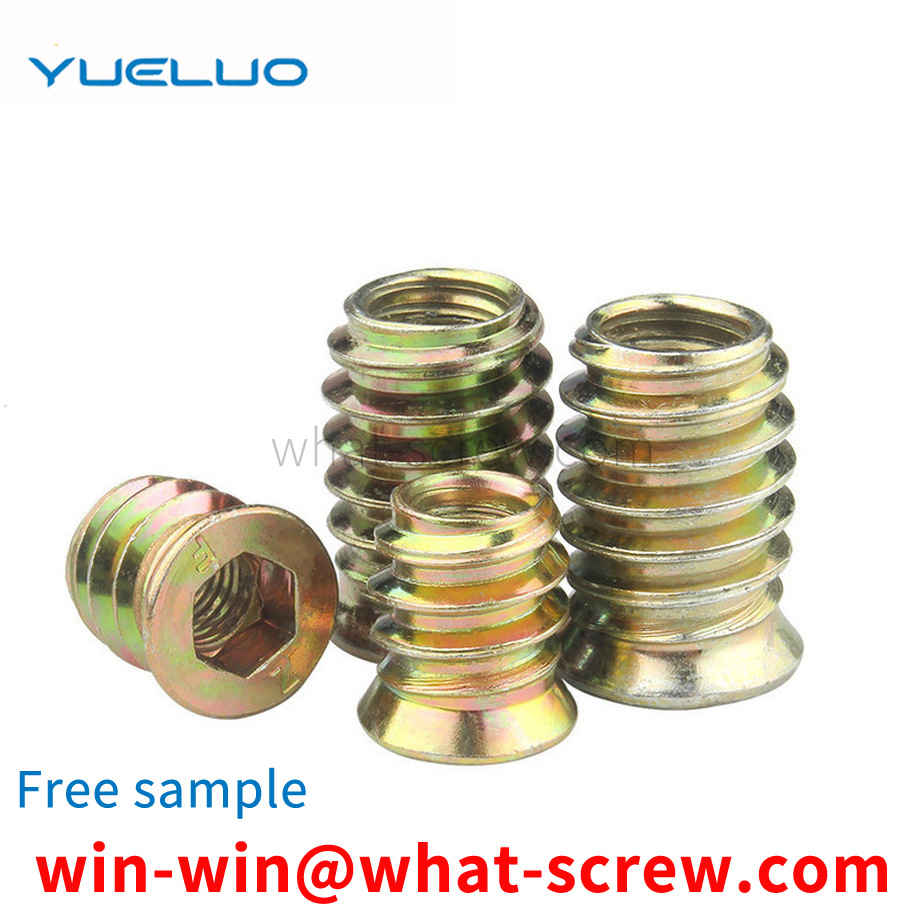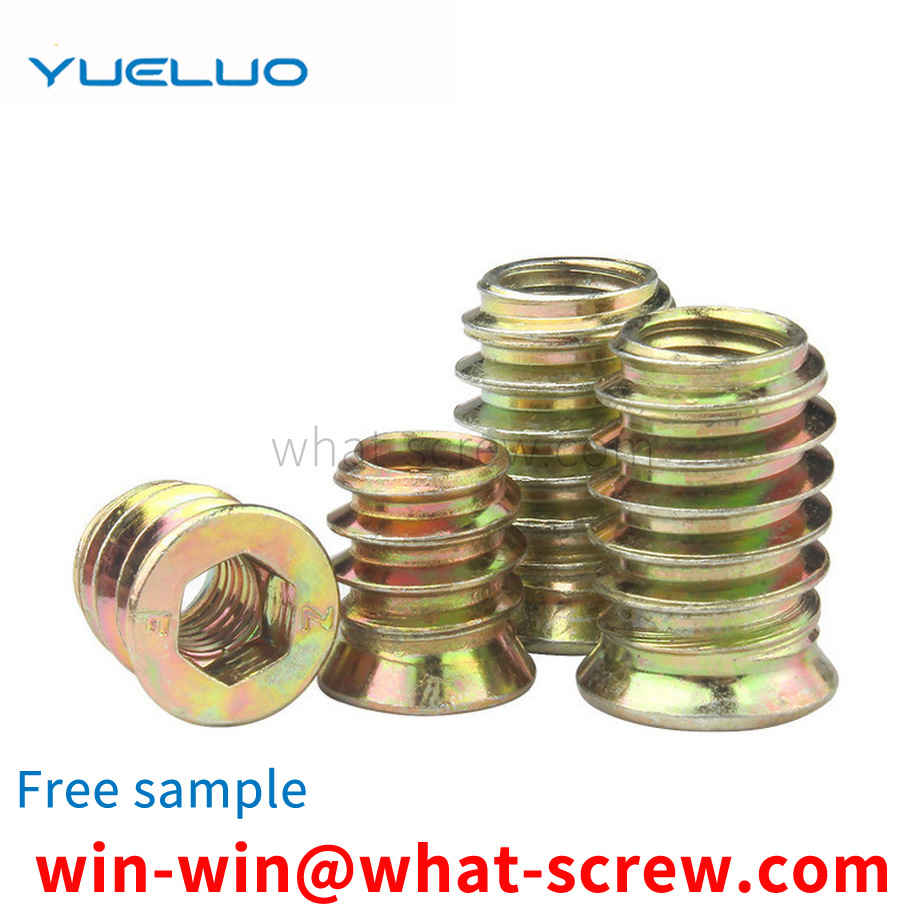Stainless steel screws are classified into austenitic stainless steel, ferritic stainless steel, martensitic stainless steel, and precipitation hardening stainless steel. The selection of stainless steel screws is also based on principles. Where to start, let you choose the stainless steel screws you need. After comprehensive and comprehensive consideration of these five aspects, the grades, varieties, specifications and material standards of stainless steel screws are finally determined. Austenitic stainless steel: the most basic alloying elements of austenitic stainless steel are chromium and nickel. The grade is a chromium-nickel austenitic stainless steel with a chromium content of about 18% and a nickel content of about 8%, often called 18-8 stainless steel. The element ratio of chromium and nickel basically ensures that the structure of the steel is stable austenitic ferritic stainless steel: 430 type ordinary chromium steel, its corrosion resistance and heat resistance are better than 410 type, magnetic, but it It cannot be strengthened by heat treatment, and is suitable for stainless steel screws with slightly higher corrosion resistance and heat resistance and general strength requirements. Martensitic stainless steel: Type 410 and 416 can be strengthened by heat treatment, with a hardness of 35 to 45HRC, and good machinability. They are used for general-purpose heat-resistant and corrosion-resistant stainless steel screws. Type 416 has a slightly higher sulfur content and is a free-cutting stainless steel. Type 420, sulfur content? R0.15%, improved mechanical properties, can be strengthened by heat treatment, maximum hardness value of 53 ~ 58HRC, used for stainless steel screws requiring higher strength. Precipitation hardening stainless steel: 17-4PH, PH15-7Mo, they can get higher strength than the usual 18-8 type stainless steel, so they are used for high-strength, corrosion-resistant stainless steel stainless steel screws. A-286, a non-standard stainless steel, has higher corrosion resistance than commonly used Type 18-8 stainless steels, as well as good mechanical properties at elevated temperatures. Used as high-strength, heat-resistant, corrosion-resistant stainless steel screws, can be used to 650 ~ 700 ℃. Austenitic stainless steel: The commonly used models are 302, 303, 304, and 305, which are the so-called 18-8 austenitic stainless steels. Both corrosion resistance and mechanical properties are similar. The starting point of selection is the production process method of stainless steel screws, and the method depends on the size and shape of stainless steel screws, and also depends on the quantity of production. Type 302 is used for machined screws and self-tapping bolts. Type 303 In order to improve machinability, Type 303 stainless steel is added with a small amount of sulfur and is used to machine nuts from bar stock. Type 304 is suitable for hot heading stainless steel screws, such as longer gauge bolts, large diameter bolts, which may be beyond the scope of the cold heading process. Type 305 is suitable for cold heading processing of stainless steel screws, such as cold formed nuts, hex bolts. Type 309 and Type 310, their Cr content and Ni content are higher than 18-8 type stainless steel, suitable for stainless steel screws working at high temperature. Types 316 and 317, both of which contain the alloying element Mo, have higher high temperature strength and corrosion resistance than 18-8 type stainless steel. Type 321 and Type 347, Type 321 contains a relatively stable alloying element Ti, Type 347 contains Nb, which improves the intergranular corrosion resistance of the material. It is suitable for stainless steel standard parts that are not annealed after welding or serve at 420~1013℃.
Each self-tapping screw is composed of three parts: the head, the shank and the end of the shank. The composition of each self-tapping screw has four major elements: head shape, wrenching method, thread type, and end form. 1. Head Shapes There are various head shapes. There are round head (semi-round head), flat round head, round head flange (with pad), flat round head flange (with pad), pan head, pan head flange (with pad), countersunk head, semi-countersunk head, Cylinder head, spherical cylinder head, horn head, hexagonal head, hexagonal flange head, hexagonal flange (with pad) head, etc. 2. Wrenching method The wrenching method refers to the way of twisting the head of the screw when installing and tightening the screw. There are two basic methods: external wrench and internal wrench. Generally speaking, external wrenching will allow more torque than any form of internal wrench (internal groove). External wrench: hexagon, hexagonal flange surface, hexagonal flange, hexagonal flower shape, etc.; internal wrench: flat groove, cross groove H type, cross groove Z type, cross groove F type, square groove, compound groove, inner flower Key, inner hexagon flower, inner triangle, inner hexagon, inner 12 corner, clutch slot, six-blade slot, high torque cross slot, etc. 3. There are many types of threads, including self-tapping threads (wide thread), machine threads (ordinary threads), drywall screw threads, fiberboard screw threads, and some other special threads. In addition, threads can be divided into single-lead (single-end), double-lead (double-end), multi-lead (multiple-end) and high-low thread double-end threads. 4. Terminal form There are two main types of terminal form: tapered end and flat end. However, according to the needs of use, at the screw-in part of the end, grooves, grooves, incisions or parts with a similar drill shape can be processed with cutting function. In some standards, it is also a tapered end or a flat end, and there are different forms such as a rounded end.
In specific implementation, the axial three-dimensional shape of the nut and the screw head is in the shape of a pentagonal frustum, the elastic surface of the screw is parallel to the center line of the bolt, and the upper contour line is arc-shaped; the screw can be full or partial thread; the top of the screw head The shape is round.
Fig. 1, Fig. 2, and Fig. 3 show that the rivet nut is cut into the required blank from a chemically treated low carbon steel disc, and the blank is placed in the die, and the upper and lower punches are used for shaping to obtain a shaped blank. , and then put the shaped blank in the die, use the punch punch to cold-head out the required brim blank (1) and the deformed skirt (2), and then use the punch punch in the die to continue Cold heading out the brim blank (1) and the deformed skirt (2). Then put the semi-finished material into the concave die and use the punch of the punch to continue to squeeze the threaded hole (3) of the nut tapping skirt, and then put the semi-finished blank into the concave die and use the upper punch and the lower sleeve to drop it. material. There are fish teeth (6) below the brim; the outer side of the lower end of the threaded hole is provided with a chamfer (5); the cross-section of the thread of the inner wall of the threaded hole is an isosceles trapezoid, and the upper bottom of the trapezoid is a concave arc (4), In this way, the riveted object is firmly connected to the rivet nut.
A rivet is a nail-shaped object with a cap on one end: in riveting, the parts being riveted are joined by their own deformation or by interference. There are many types of rivets, and they are informal. However, the two ends of conventional rivets are concentric, which is not suitable for special occasions.
We have many years of experience in the production and sales of screws, nuts, flat washers, etc. The main products are: nylon round head bolts, anti-loosening nuts, guardrail anti-theft screws and nuts, hexagon socket blackened bolts and other products, we can provide you with suitable products for you fastener solutions.



















 Service Hotline
Service Hotline




